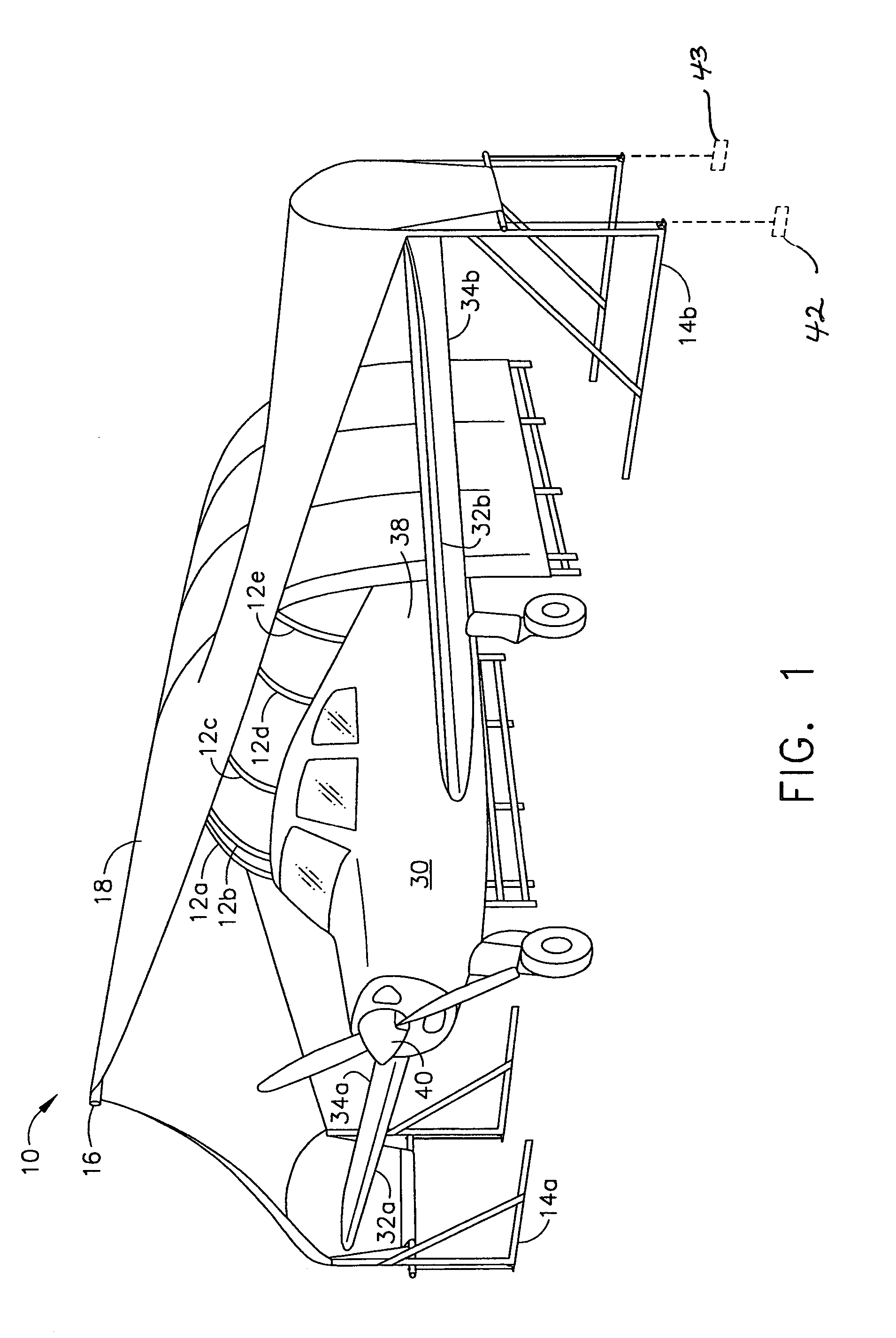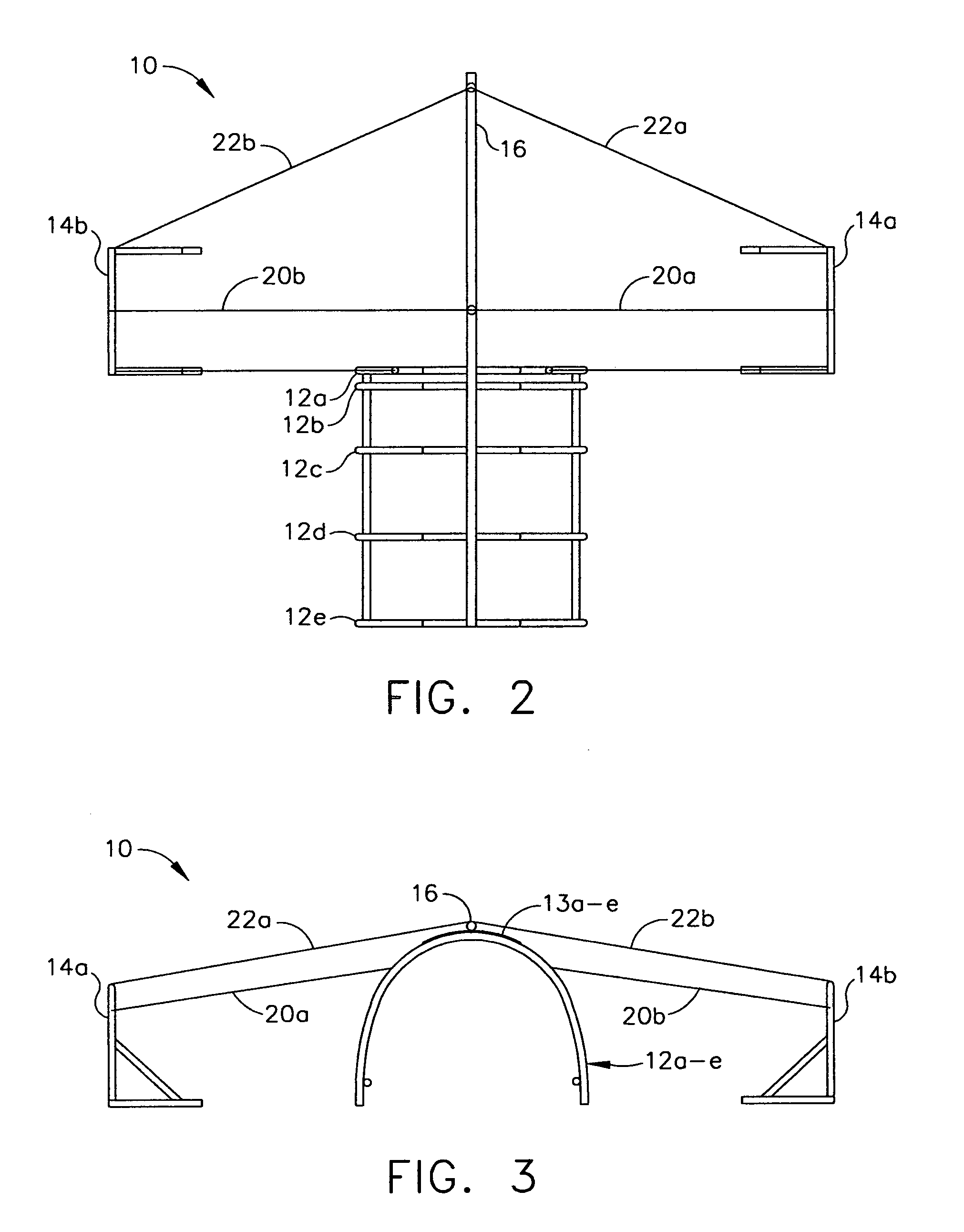Airplane hangar
a technology for hangars and aircraft, applied in the field of hangars for aircraft, can solve the problems of unsafe operating conditions, cover fluttering, and it is difficult for a single person to properly cover, and achieve the effect of low cos
- Summary
- Abstract
- Description
- Claims
- Application Information
AI Technical Summary
Benefits of technology
Problems solved by technology
Method used
Image
Examples
Embodiment Construction
[0022]While those skilled in the art will recognize that the present invention can easily be adapted for use with a wide variety of aircraft, the description herein assumes, but is not intended to be limited to, a single engine monoplane of size and dimensions similar to any of many makes and models presently in use.
[0023]As can be seen in FIG. 1 and in subsequent figures, the present invention provides an airplane shelter 10 for sheltering of an airplane 30. The shelter 10 is comprised of a plurality of vertical support members 12a–e, a cantilever apex beam 16, a pair of lateral support members 14a,b, a removable pole 24 and a covering material 18. Optional elements include central support cables 20a,b, forward support cables 22a,b, front door flaps 26a,b, cantilever support cable 21 and support pole 23, supplemental cantilever beams 17a, b, and walls.
[0024]The vertical support members 12a–e may be essentially arched in configuration, but may be of any of a number of shapes which w...
PUM
 Login to View More
Login to View More Abstract
Description
Claims
Application Information
 Login to View More
Login to View More - R&D
- Intellectual Property
- Life Sciences
- Materials
- Tech Scout
- Unparalleled Data Quality
- Higher Quality Content
- 60% Fewer Hallucinations
Browse by: Latest US Patents, China's latest patents, Technical Efficacy Thesaurus, Application Domain, Technology Topic, Popular Technical Reports.
© 2025 PatSnap. All rights reserved.Legal|Privacy policy|Modern Slavery Act Transparency Statement|Sitemap|About US| Contact US: help@patsnap.com



